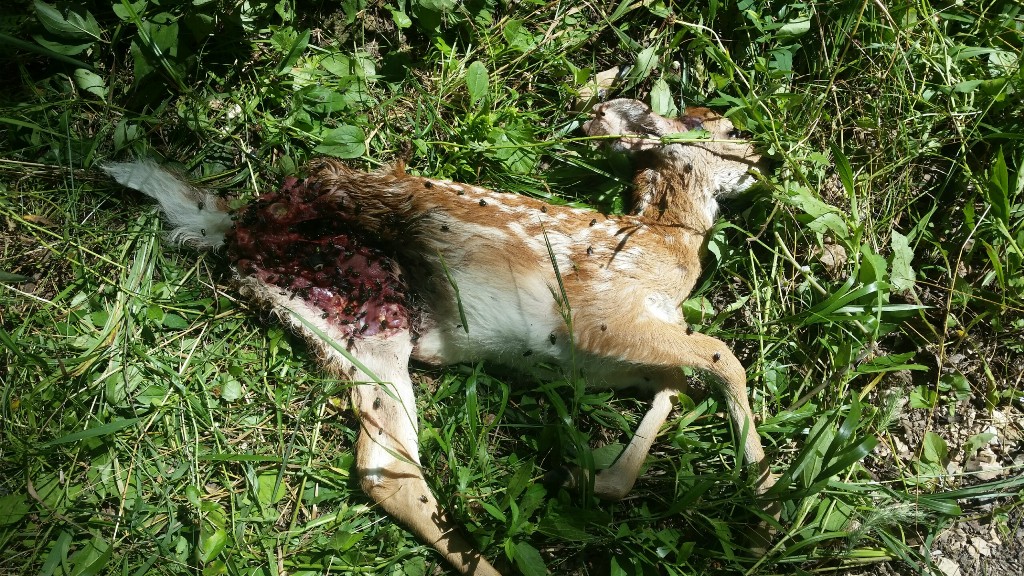Deer Hunting And Management: The Effect Of The Changing Predator Base
Filed under: Hunting Blog, Predator Trapping, Whitetail Habitat Management
Successful deer management to grow and hunt bucks in a free-range environment has taken a new twist over the last 10 years. Just following the play book for passing bucks and providing quality food, cover, and water may not yield the results you desire. Something has changed throughout much of the range of the white-tailed deer.
It’s the number of predators. When I was a boy during the 1960s and 70s, coyotes were shot on sight by farmers (almost every farmer I knew always had a rifle in his truck). Raccoon pelts were bringing $50 and anyone I knew that was any kind of hunter or outdoorsmen trapped and/or hunted raccoons as a source of additional income. Chicken hawks (any large hawk was called a chicken hawk) were also shot on sight. These actions didn’t cause any of these predators to go extinct.

In college I was taught to feel sorry for predators. My “book learning” taught the theory that predators were almost never an issue with game species. That might have been true then (although I had a hard time buying into the theory). I was also taught in college that all natural systems are very dynamic – always changing (I certainly have experienced and agree with that!).
Whatever the theories and realities were, the current impact of predators on deer, turkey, quail and other game species are real and measurable! I had a graduate student ten years ago study the impacts of coyote and bobcats on fawn recruitment (fawns surviving until hunting season) on a private property in northern Alabama. Briefly summarized, the results were stunning! He monitored fawn recruitment during year one, then had a trapper remove many coyotes and bobcats from the 2,000 acre property during the following fawning season. During the second fawning season there was a 150+% increase in fawns at the same property as a result of removing 20+ coyotes and 10 bobcats! It appeared the turkey and rabbit population also exploded!
Since that time, much more research has been conducted that supports predators are changing the dynamics of managing deer. Several of the researchers reported results of fawn mortality documented by the use of vaginal transmitters (VITS). This technology allowed researchers to capture does and insert a transmitter in their vagina. The VIT is pushed out of the birth canal when the fawn is born and alerts the researchers by changing the frequency/tone of signal. Researchers can often find the birth site and/or fawn within four hours or less after birth.
Dr. John Kilgo, a talented researcher for the Forest Service, has years of such data. He and his staff have documented that in recent years, 70% of the fawns were killed by predators at their research site (a 300 square mile area in South Carolina) during the first few months after birth! 62% of the total mortality was due to coyotes!! This is not a guess or a theory. At this level of predation, even without any hunting mortality, deer populations will decrease in number and quality (more on the stress of predation next week).
John and his staff swabed the kill site and used advanced techniques with genetic testing to confirm if the killer was a coyote, bobcat, domestic dog, etc. Using this technology, they can tell if it was a male or female predator and if it was the same predator that killed a fawn ¼ mile or 10 miles way. John’s research is fascinating!
He ended his abstract by stating “I predict that this pressure (coyotes) will require significant changes in how deer populations are managed in the Southeast in the future, because coyotes are here to stay.”
I agree with John, but know from my student’s work and my experience, that coyotes can be trapped and their impact on deer populations reduced. Trapping and calling coyotes are fun activities (GDTV 119). However, it requires time and effort. There is no easy method to significantly reduce coyote populations. Some managers will simply let their deer herds be significantly reduced by coyotes. I, and hopefully many others, will not sit by and watch deer populations be reduced significantly by predators. I will actively call and trap coyotes to keep their population in check so deer, turkey, and other game species can maintain a healthy population.
I enjoy hearing a coyote howl. However, I enjoy seeing and interacting with deer and turkeys more. When push comes to shove, I’ll be the deer’s best friend and the coyote’s worst enemy. How about you? Will you sit by and watch America’s favorite game species be reduced to the occasional rare sighting? Or will you join me in protecting the future of hunting?
The damage by coyotes and other predators to deer and other game species is not just direct mortality. Predators also can cause much stress to game species! Next week I’ll share strategies deer hunters/managers can use to fight this change and improve the odds of growing mature bucks on their hunting grounds. While you’re waiting on that blog to come out, watch some of the coyote action caught on video by our Reconyx trail cameras here.
Growing (and protecting) Deer together,
Grant



